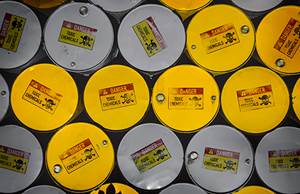Technical Cleanliness is a Task in the Production Chain
To ensure reliable, cost-efficient and sustainable cleaning, many production factors have to be considered before implementing the right cleaning solution.
During my attendance at parts2clean this year, I realized that the term “technical cleanliness” is spreading into more and more industrial branches. First created by the automotive industry to describe an adequately slight particle contamination on the surface of functionally relevant components, technical cleanliness is now becoming increasingly important in other sectors such as medical and other precision part production. In addition, it is starting to be used to determine a maximum level of film-like residues on parts’ surfaces. The measure here is the necessary degree of cleanliness required for quality results in downstream processes such as plating, heat treatment, bonding, welding or assembly. As a result, part manufacturers are faced with increasing cleanliness requirements regarding particulate and film-like residues.
Taking all this into account, wouldn’t it be great to have a cleaning machine into which dirty parts go in at the front and they come out at the back clean enough for the next manufacturing step? I bet there will never be such a machine because cleaning is as individual as the machined products and manufacturing situations. Part cleaning is thus a topic that engages not only shortly before completion of a product, but throughout the entire process chain.
To ensure reliable, cost-efficient and sustainable cleaning, many factors along the production chain have to be considered, such as what kind of materials are machined? At which production steps do the parts become contaminated and with what kind of soil? Is it necessary to remove contaminations immediately, in order to avoid an impairment of the next production step? Does machining happen with different media or fluids, and can a mixture of these fluids result in cleaning problems? Can cleaning of parts made of different materials, such as steel, aluminum and brass, in one machine lead to the risk of cross contamination? What level of cleanliness has to be achieved? Based on the answers, an optimally matched cleaning solution can be developed.
In selecting an appropriate cleaning agent, the “like dissolves like” principle of chemistry applies. In other words, for water-based (polar) types of contaminations such as coolant and lubricant emulsions as well as for removing solids such as chips, salt, residues of polishing pastes and particles, aqueous cleaning agents are typically the first choice. For removing mineral oil-based, non-polar contaminations, such as machining oils, greases and waxes, a solvent will commonly be the preferred cleaning agent. I know, from an environmental protection viewpoint, solvents do not have the best reputation. But nowadays, they are usually employed in completely closed cleaning machines that allow for a closed circuit use of the solvent, which enable them to be handled in an ecologically sound and sustainable manner.
The design, equipment level and capacity of a cleaning system are likewise task-related. Here, questions will focus on, for example: How many flood tanks or immersion tanks are required to achieve the specified cleaning result? Will it be necessary to use ultrasound and, if so, how powerful should this system be? How should the parts be dried? Will it be necessary to integrate a fluid treatment or re-conditioning system, and if so, what kind of system? Most of the issues arising when it comes to selecting the right technology, equipment level and machine rating can be answered via cleaning tests at a machine or cleaning agent manufacturer. But that’s still not all: Stable and efficient cleaning processes also require continuous control of the cleaning agent and the achieved level of cleanliness. Cleaning baskets or workpiece holders, as well as corrosion protection, are aspects worth considering.
As soon as the cleaned parts have left the machine, there is the risk of re-contamination by the surrounding environment or personnel. Thus, a decision has to be made in what kind of environment they will be handled. Will the “normal” production environment be OK or will a controlled area or even a cleanroom be necessary?
Last, but not least, don’t forget the staff involved in cleaning. It is equally important to educate employees about the role they play in overall part cleanliness. They need to understand what actually happens in the cleaning machine, and how, for instance, bath maintenance measures or regular maintenance work is performed on the cleaning machine.
Related Content
A ‘Clean’ Agenda Offers Unique Presentations in Chicago
The 2024 Parts Cleaning Conference, co-located with the International Manufacturing Technology Show, includes presentations by several speakers who are new to the conference and topics that have not been covered in past editions of this event.
Read MoreParts Cleaning Sector Shifts Energy Toward Regulatory Changes
With changes in EPA regulations regarding the use of some popular cleaning fluids, cleaning suppliers and end users are readjusting business strategies and/or cleaning processes to meet new requirements.
Read MoreIn-line Monitoring for Automated Immersion Cleaning Systems
Ecoclean’s Acoustic Performance Measurement (APM) system provides in-line measurement of ultrasonic frequency and power in fully automated immersion cleaning systems on a batch-by-batch basis or at defined time intervals, such as once a shift, day or week.
Read MoreIndustrial Cleaning Shop Zeros In on Precision
This parts cleaning company is elevating its efforts to become a technical cleanliness expert, which presents an exciting, yet sometimes arduous, journey. The ongoing education of the team as well as significant investments in equipment and processes attribute to this shop’s success.
Read MoreRead Next
Do You Have Single Points of Failure?
Plans need to be in place before a catastrophic event occurs.
Read More5 Aspects of PMTS I Appreciate
The three-day edition of the 2025 Precision Machining Technology Show kicks off at the start of April. I’ll be there, and here are some reasons why.
Read MoreSeeing Automated Workpiece Measurement in Real Time
User-friendly inspection software for CNC machining centers was shown at IMTS 2024 monitoring measurements between and after machining while performing SPC based on recorded measurement values.
Read More






















